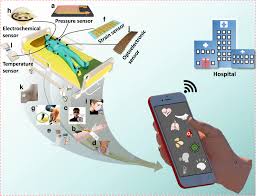A recent study led by Scripps Research scientists highlights the critical role of timing and personalized communication in improving the effectiveness of health alerts from wearable sensors. Published in The Lancet Digital Health on July 24, 2024, the study titled “Wearable Sensor Signals and Self-Reported Symptoms to Prompt At-Home Testing for Acute Respiratory Viruses: A Digitally-Enabled Pilot Randomized Clinical Trial” explores how alerts based on wearable sensor data influence people’s actions during a respiratory virus outbreak.
The study, conducted during the peak of the COVID-19 pandemic, found that only 25% of participants acted on alerts from wearable sensors indicating potential respiratory infections by conducting at-home viral tests. This is in stark contrast to 56% of participants who followed through with self-testing when alerted based on reported symptoms.
Giorgio Quer, Ph.D., the study’s lead author and Director of Artificial Intelligence at Scripps Research Translational Institute, notes, “What was exciting about this study is that we showed we can provide an individualized infection alert based on data passively monitored by sensors. However, we also discovered key limitations in delivering these alerts in a manner that leads to actionable behavior changes.”
The research team had previously demonstrated that wearable fitness monitors could predict the likelihood of a COVID-19 infection with about 80% accuracy by analyzing changes in sleep patterns, activity levels, and heart rates. In this study, they sought to determine whether alerts based on these data could prompt timely self-testing for COVID-19 and respiratory syncytial virus (RSV), even in the absence of symptoms.
The trial involved 450 adults in the U.S., divided into three groups: those receiving alerts based on sensor data, those receiving alerts based on symptoms, and a control group with no alerts or tests. The results indicated that individuals prompted by symptom-based alerts were significantly more likely to perform and report on self-tests compared to those alerted solely by sensor data. The timing of sensor-based alerts, delivered at a fixed morning hour, was identified as a potential reason for the lower follow-through rate, as participants might not have been in a position to test at that time.
Steven Steinhubl, MD, senior author and adjunct professor at Scripps Research, emphasizes, “There are both individual and public health benefits to alerting people of early physiological changes that might signal a viral infection. It provides people with additional time to isolate and prevent virus spread.”
The study also underscores the importance of how information is communicated to users. Alerts based on real-time symptom reporting were more likely to result in action compared to those based on pre-scheduled sensor data assessments.
Future research aims to refine these alert systems, including exploring their potential applications for monitoring pregnancy-related health risks. Quer’s team is focused on understanding how to effectively convey health information to users in a manner that promotes positive behavioral changes.
For further details, refer to the study: Giorgio Quer et al, “Feasibility of Wearable Sensor Signals and Self-Reported Symptoms to Prompt At-Home Testing for Acute Respiratory Viruses in the USA (DETECT-AHEAD): A Decentralized, Randomized Controlled Trial,” The Lancet Digital Health, DOI: 10.1016/S2589-7500(24)00096-7. [Read the full text](https://www.thelancet.com/journals/lan … (24)00096-7/fulltext).












